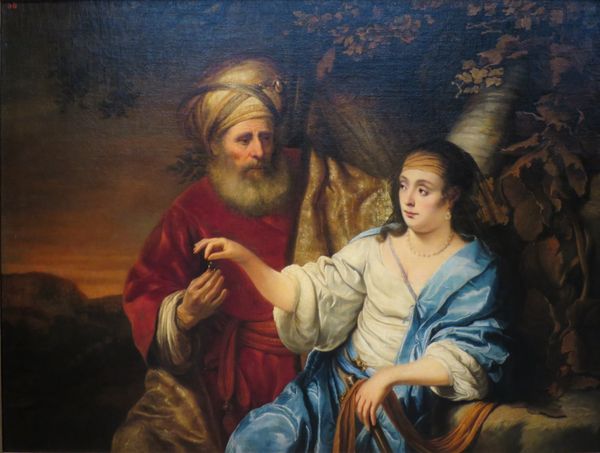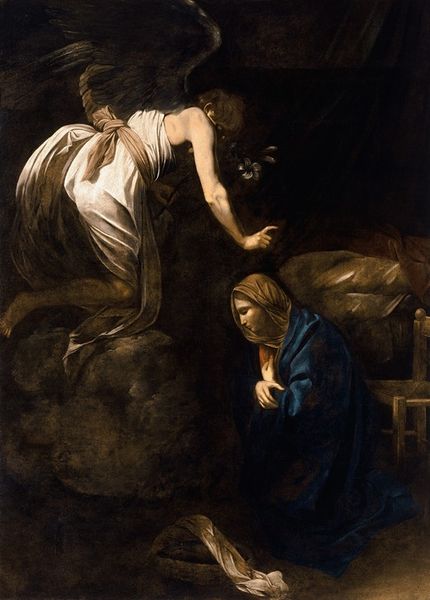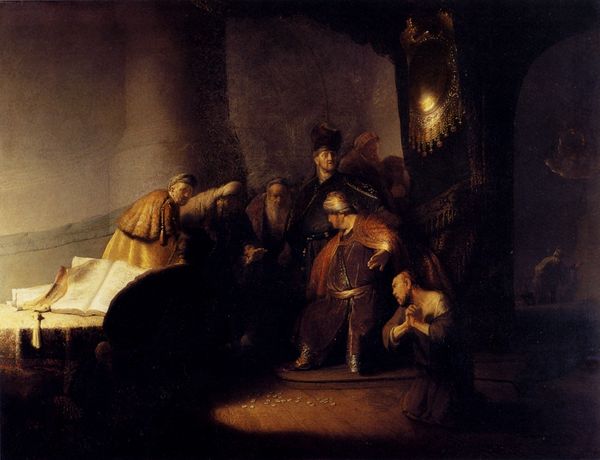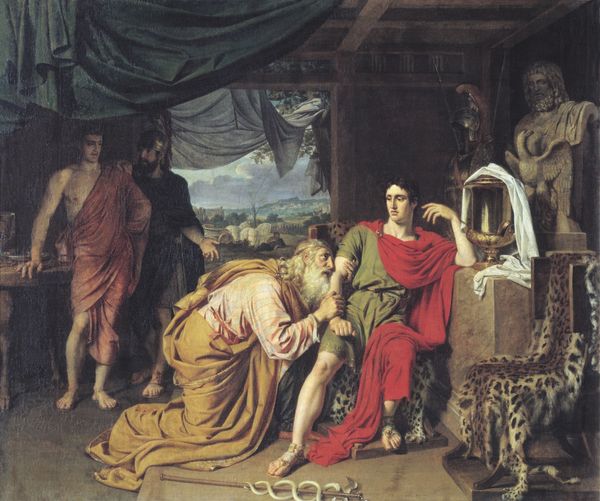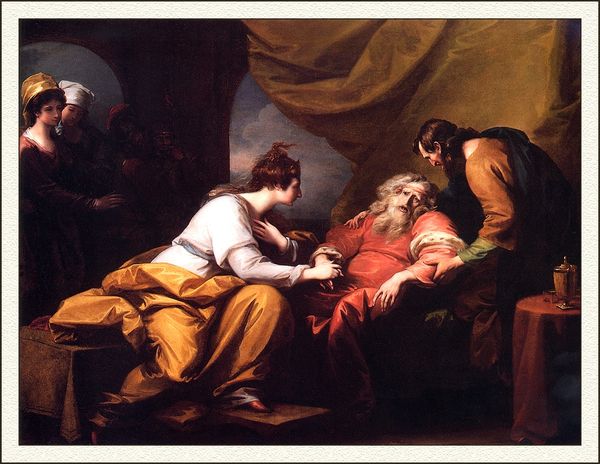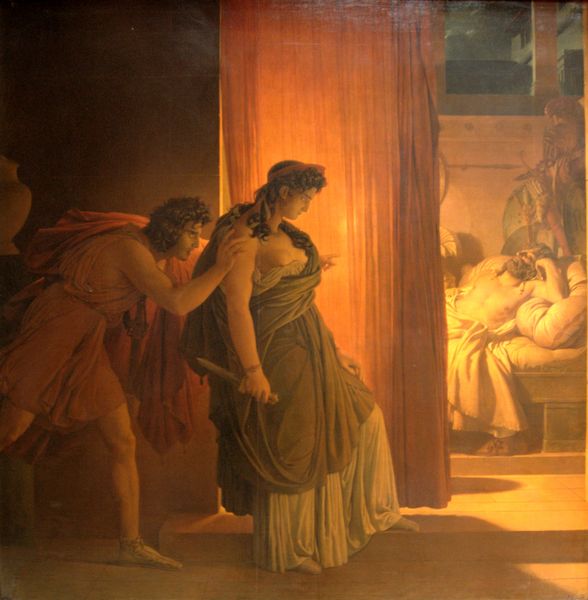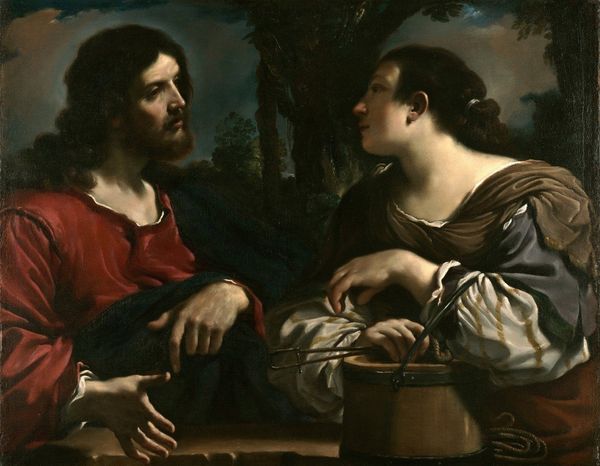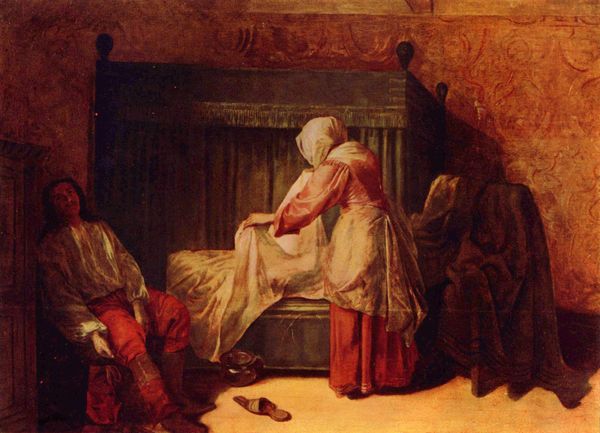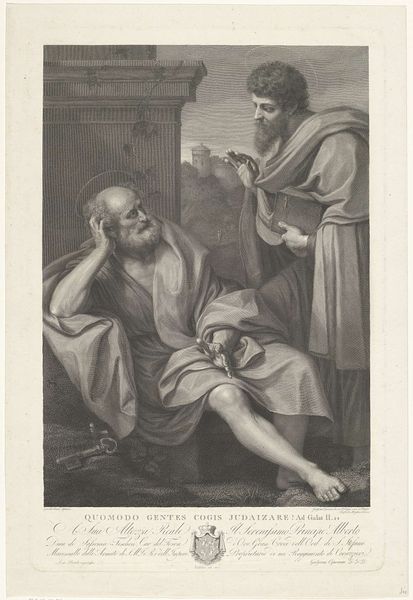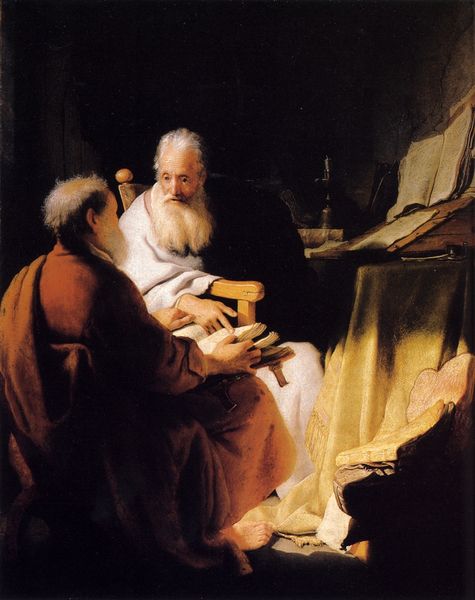
painting, oil-paint
#
portrait
#
narrative-art
#
painting
#
oil-paint
#
romanticism
#
history-painting
#
academic-art
Copyright: Public domain
Curator: Here we have Karl Lessing’s oil on canvas, "Mourning royal couple", completed in 1830 and currently housed in the Hermitage Museum. What stands out to you? Editor: Melancholy. The colors are muted, almost dusty, which enhances the sense of grief, of something weighty pressing down on these figures. Curator: The materials themselves speak to a certain social context. Oil paint, favored by the academy, allowed for those subtle gradations, essential for representing nuanced emotion and, frankly, the wealth required to commission such a piece. But look closely, the fabric of the king's robes seems almost palpable, doesn't it? The texture feels meticulously rendered. Editor: Absolutely, and those textures serve the symbolic purpose. Her crimson gown hints at passion, suppressed now by mourning, while his turban-like crown points to fading authority, diminished vitality in the face of death. The clasped hands – a traditional gesture of consolation—emphasize their shared burden. Curator: Notice, though, the relatively unadorned architecture around them. Bare stone steps. It shifts focus. Lessing compels us to see the universality of grief, the weight of mortality. Royal or common, such emotional distress unites us. The use of painting allows the ability to make an emotional experience so real to its observers. Editor: Perhaps. But those religious figures in the background... they underscore how historical mourning rituals and images, particularly those of rulers, perpetuate power. This couple’s grief is being watched, validated by a higher authority and codified into history. Curator: That might well be so, I consider the means of labor necessary for the execution of the work to emphasize the human quality of their sorrow, a reality that goes past time and political systems. This historical work presents humanity as a work in progress, shaped by cultural frameworks and expectations. Editor: I find the staying power of its symbols speaks volumes of the continuity in our collective experience. I won’t deny there are universal components here as well. Curator: Thank you, it’s been invaluable to engage with this poignant exploration from such a refreshing symbolic viewpoint. Editor: Thank you! Examining the image of such universal meaning in companionship has proven fascinating.
Comments
No comments
Be the first to comment and join the conversation on the ultimate creative platform.


